Ritalin & Adderall Rehab in Los Angeles, CA
Adderall & Ritalin Addiction
While medication does a mountain of good for many people, that’s not the end of the story. It’s not as simple and cut and dry as taking Adderall or Ritalin and being done with it in some cases.
STIMULANTS
Adderall & Ritalin Addiction & Treatment
An Introduction to Adderrall & Ritalin Addiction Treatment in Los Angeles at Thrive Treatment℠
What’s the price you pay for paying attention?
Or to control your concentration, to be less distracted, to have command over impulsiveness? To enhance performance and have a laser-like focus?
Attention-Deficit/Hyperactive Disorder can be difficult and frustrating to live with and have you or a loved one, often a child or teenager, falling behind at work or school. Grappling and searching for solutions.
Frequently the solution comes in the form of a prescription to a stimulant drug and by far the most popular for ADHD are Adderall (generic drug name: amphetamine and dextroamphetamine) and Ritalin (generic drug name: methylphenidate). Extremely well known on college campuses around the country.
With around 9.4%, children, or 6.1 million up to age 18, or who have ever been diagnosed with ADHD and roughly 4.4% of adults, it shines a light on just how widespread the diagnosis is. More pressingly, it means there are a lot of people, young and older, who are taking prescription drugs. 2/3rds of children in fact and between 2006 and 2016, there was a 2.5-time increase in prescription amphetamine use with a peak of 20 tons whereas methylphenidate peaked at 19.4 tons.
All told, total stimulant medication usage doubled in those 10 years.
Astonishing numbers.
While medication does a mountain of good for many people, that’s not the end of the story. It’s not as simple and cut and dry as taking Adderall or Ritalin and being done with it in some cases.
There’s a real stigma attached to an ADHD diagnosis, with one study noting, “stigma associated with ADHD can be conceptualized as an underestimated risk factor, affecting treatment adherence, treatment efficacy, symptom aggravation, life satisfaction, and mental well-being of individuals affected by ADHD. Public, as well as health professionals’ concepts about ADHD, are highly diverse, setting individuals with an ADHD diagnosis at greater risk to get stigmatized”.
In addition, and unrelated to what the drugs are actually designed to treat, both Adderall and Ritalin have a side effect of causing weight loss. What starts as the pursuit of slimming down can easily turn into a full-blown stimulant addiction since, from the jump, the medication is being taken for the wrong purpose and not as directed.
INSURANCE
We Work With Most Major Insurance
At Thrive Treatment℠ we accept most private insurance plans and we are in network with Cigna, Optum, First Health, and Anthem Blue Cross. Additional payment options are available so don’t hesitate to give us a call so we can get you the help that you need.
Change Your Life with a Single Call
1-855-232-1334












ADDICTIONS
Addictions We Treat
WITHDRAWALS
Adderall & Ritalin Withdrawal
The discomfort of going through withdrawal is a big driver of the cycle of addiction. Even if you want to quit, the moment you start to feel the pangs of withdrawal, the choice becomes; work through it or alleviate the discomfort. The easier call, and the path of least resistance, is to just kill the irritation, pain and distress by taking more Adderall or Ritalin.
Withdrawal from these two looks like this:
- Depression
- Anxiety, worry and panic attacks
- Increased appetite
- Issues sleeping, either getting too much or too little
- Difficulty with concentration
- Headaches
- Fatigue
- Cravings
- Slowed reflexes/movement
- Low heart rate
Symptoms of withdrawal generally last anywhere from 1 to 4 weeks but can linger longer.
In-Person
Virtual Telemedicine
RECOVER
Let's Work Together to Overcome
Thrive Treatment℠ Center offers evidence-based addiction treatment at our Santa Monica location. Located minutes from the beach, our central location allows you the opportunity to learn how to thrive, when recovering from stimulant addiction.
SYMPTOMS
What Are the Signs of Adderall/Ritalin Addiction?
There’s been a long-standing concern that the use of stimulants by children can lead to the development of a substance abuse disorder (SUD) later in life. It’s worth noting that, according to the National Institute on Drug Abuse (NIDA), “on balance, the studies conducted so far have found no differences in later substance use for ADHD-affected children who received treatment versus those that did not. This suggests that treatment with ADHD medication does not affect (either negatively or positively) an individual’s risk for developing a substance use disorder”.
That seems like a net positive in the long run but for those currently taking stimulants, especially if they’re not being used as prescribed, the risk of substance abuse and Adderall and Ritalin addiction is very much present and real. Misuses to be aware of in addition to taking Adderall or Ritalin in a way or a dosage other than prescribed are taking someone else’s meds or taking them exclusively to get high.
After all, stimulants like Adderall and Ritalin work by increasing the activity of the brain chemicals dopamine and norepinephrine. Dopamine is a neurotransmitter that’s closely associated with pleasure, movement and attention as well as integral in the reinforcement of rewarding behavior while norepinephrine affects blood vessels, blood pressure and heart rate, blood sugar and breathing.
The euphoria that accompanies dopamine can very much lead to a person chasing that feeling.
Also, as you likely noticed at the top, one of the active ingredients in Adderall is amphetamine which is indeed related chemically to methamphetamine. Although there is some similarity in effects, meth is nonetheless far more powerful and brings with it more dangerous side effects.
A study by Johns Hopkins found that even as prescriptions for stimulants have remained more or less unchanged recently, emergency room visits associated with Adderall have been rising substantially with an increase of 156% in the period observed, 2006 to 2011.
As for Ritalin, or methylphenidate, it can become addictive when taken in excessive amounts and used either intranasal (snorted) and intravenous (injected). In fact, when snorted the effects are similar to those of cocaine.
Seeing as how they’re both stimulants, the warning signs for Ritalin and Adderall addiction are similar:
- Taking larger amounts than prescribed to get the same effect, building a tolerance
- Intense cravings
- Reduced appetite and weight loss
- Rapid heart rate
- Dehydration
- Nervousness
- Taking other people’s medication
- Ingesting it in ways other than prescribed like snorting
- Mood swings
- Inability to complete tasks without the medication
- Neglecting responsibilities
- Continuing to use even when it puts you in danger or causes clear mental or physical problems
- Experiencing withdrawal symptoms when not taking them
TESTIMONIALS
Stories of Hope & Healing
Great Program!
“Great program with friendly staff! I highly recommend you to check it out! They know what they are doing! Tanner R. is the man and provides great customer service! Talk to him and he will point you in the right direction.”
Miles S.
I am Grateful!
“I am grateful for the immediate attention I received from Matt at Thrive Treatment℠ center. He is sensitive and caring and he graciously spent time with me and my husband to help our family situation. In just a short amount of time he made a big difference and gave us hope. He definitely is passionate about helping people and gave us great perspective and advice.”
Laura B.
Top-Notch Program
“Thrive treatment is a top notch program with one of the best clinical teams in LA. When I have clients at Thrive, I know without a doubt they are receiving the authentic help that they desperately need. Thanks Clayton for the amazing program you have built!”
David B.
Great Program!
“Great program with friendly staff! I highly recommend you to check it out! They know what they are doing! Tanner R. is the man and provides great customer service! Talk to him and he will point you in the right direction.”
David F.
Boundlessly Grateful
"Thrive met my son where he was and worked to find the right mix of supports and interventions to help him create a path toward health and wellness. I am boundlessly grateful to the program and its staff. Not only does Thrive offer an array of helpful tools, but it has a staff that cares about the clients, meets them exactly where they are, and tailors treatment to their individual needs."
Lynn M.
Supportive & Informative
"Thrive treatment is a very supportive and informative IOP. I was in one of the sober livings that works with their service, the Last House, and found that in thrive treatment, I was helped not only to process my emotions as they came up, but also learned quite a lot about the different healthy coping mechanisms I could engage in to move forward without being self destructive."
Leo L.
Huge Asset in My Sobriety
"Thrive treatment was a huge asset to me in my sobriety. I will be forever grateful for the entire staff at Thrive. The facility is well furnished and in a great location that makes being there very comfortable. On top of that I felt as though the entire staff was very invested in my recovery."
Ryan S.
Your Journey To Recovery Begins Today

GET HELP
Thrive Treatment's Adderall/Ritalin Rehab in Los Angeles Can Help
Adderall treatment and Ritalin treatment are taken as one and the same since both drugs are stimulants. The initial step is all about detox because you can’t work on the mind until the body is free of toxins. Depending on the severity of the addiction, in some cases that looks like tapering off the drugs or possibly mitigating the withdrawal symptoms with medication. Managing withdrawal symptoms and the physical dependence on either medication is first and foremost.
After that, the focus shifts squarely to the mental side of addiction.
CONTACT
Get in Touch Now
At Thrive Treatment we utilize a multi-modal approach to recovery and create a treatment plan that is suited to your distinct needs and circumstances. Seeing as how addiction is a mental illness, we work with you, through individual and group therapy sessions, to create a strong therapeutic relationship and help uncover the why of your addiction.
With a skilled, compassionate and warm clinical staff in addition to board-certified addiction specialists, we utilize an integrated and holistic approach to help you get your life back and make sure your recovery from Adderall or Ritalin addiction is a lasting one.
Speak to Someone Right Now
1-855-232-1334

